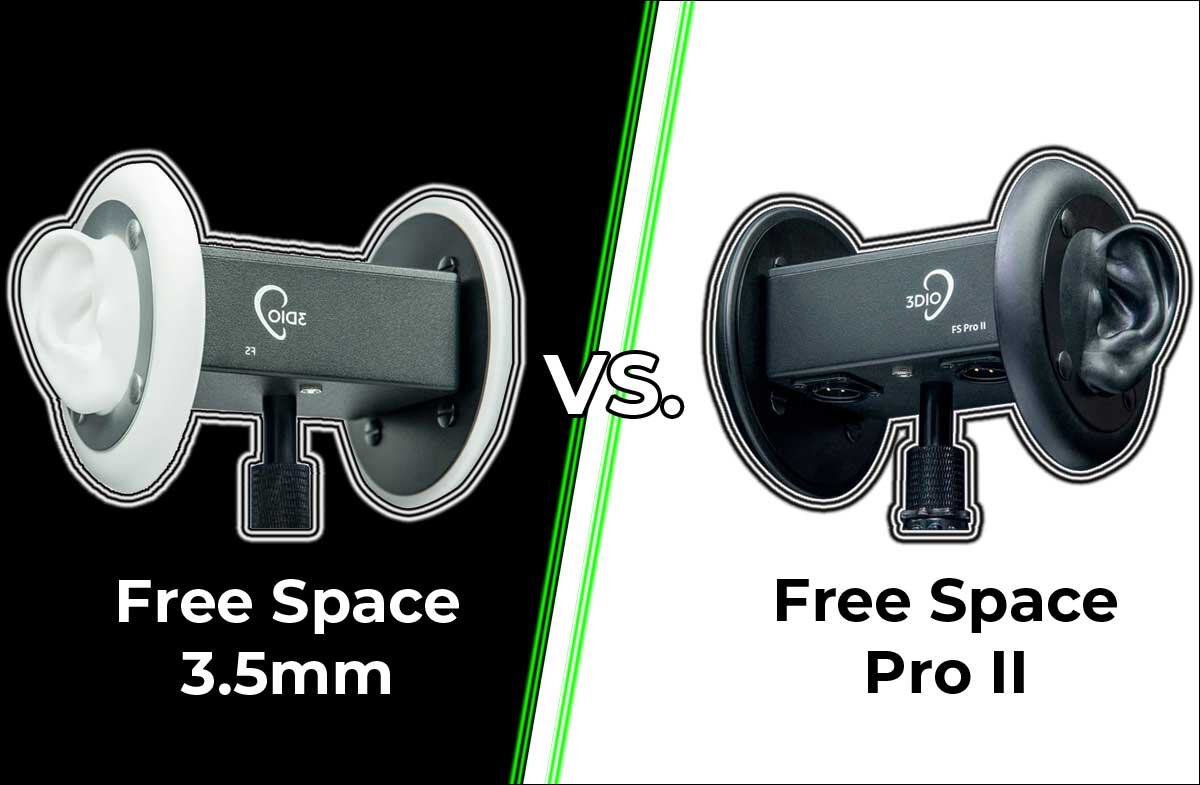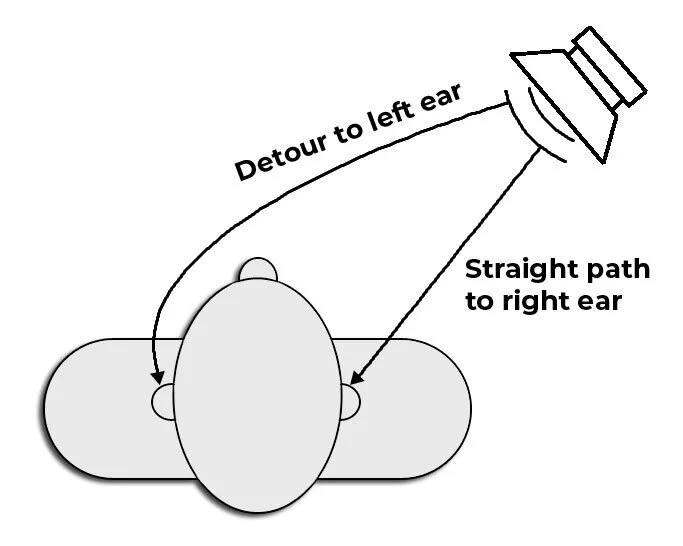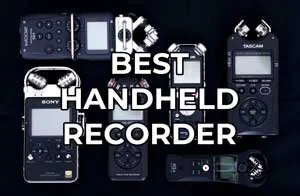Best 3Dio Binaural Microphone (Free Space vs. Free Space Pro II Comparison )
Read this article before purchasing a 3Dio binaural microphone. You’ll be surprised!
The explosion in popularity of ASMR sounds has created an unprecedented interest in binaural microphones. 3Dio capitalized on this interest and is now one of the most popular ASMR microphone manufactures.
Besides being popular for ASMR, binaural microphones are also used to record nature sounds. As a nature field recordist, I recently looked into 3Dio’s products and was surprised by what I found. 3Dio’s flagship microphone, the Free Space Pro II, is worse than the entry-level Free Space microphone! Click here to find out why or continue reading for the full story.
Links in this article are affiliate including Amazon Associates. Purchasing through these links will earn me a small commission at no extra cost to you. Thank you for your support!
What Is Binaural Audio
Everyone knows what binaural audio sounds like, even if they’ve never heard the term before. That’s because humans naturally hear the world in binaural audio. Binaural literally means two ears.
Our hearing is one of our best senses, yet most of us take it for granted. Have you ever thought about how amazing it is to discern the location of a sound without seeing it? I invite you to observe this phenomena by closing your eyes for a few moments.
As you sit in darkness, sound begins to paint a three-dimensional image of your surroundings. Notice the sounds on your right and the sounds on your left. Then, take in the sounds directly in front of you and then behind. This is all made possible because you have binaural hearing.
How Does It Work?
Because our ears are separated from one another, sound waves reach each ear at slightly different times. This time difference is instantly decoded by our brain, which then tells us where the sound originated from.
This process is called sound localization and occurs within milliseconds.
I’ve written an article with more detailed information on this process. If interested, you can read it here.
From subtle differences in the time received and volume of sounds, our brain calculates the location the sound originated from.
Who Is 3Dio
3Dio is a company who manufactures binaural microphones and accessories. Their unique selling point is that their microphones are mounted in hyper-realistic human ears made of silicone. They claim that this achieves the most realistic, binaural sound in comparison to human hearing.
This claim makes sense to me. The shape of our ears naturally amplifies some frequencies and reduces others. Theoretically, this could be done in post-production with an EQ curve, but using 3D molded human ears is not only easier, it produces better results.
Target Audience
Without a doubt, 3Dio microphones are most commonly used by ASMR content creators. However, they are also used by nature field recordists and others wanting to record a soundscape as accurately as humans would hear it.
In any case, the point I want to make here is that the average consumer purchasing a 3Dio microphone is intending to use it to record very quiet sounds, whether that’s the sound of brushing one’s hair, or the sound of a quiet dawn chorus.
The reason I emphasize this is because recording quiet sounds is very difficult, and certain specifications are very important in determining a microphone’s ability to record such sounds. Continue to the next section to learn more about these specifications.
Important Specifications
When it comes to recording quiet sounds, some microphones are far better than others. The factor that sets microphones apart from one other is noise.
When microphones are turned on, they produce noise that sounds like hissing static. This sound is largely produced by electrons moving around in circuits. Since electrons need to move for electronic devices to work, microphones will always produce some amount of noise.
However, manufacturers can limit the amount of noise a microphone produces by optimizing the electronic components used for low-noise operation. For this reason, noise levels of microphones varies tremendously.
Noise is an extremely important specification when recording quiet sounds. If a microphone makes too much noise, the hissing sound will be very loud and distracting in the final recording.
The specification to look for the signal-to-noise ratio, often abbreviated as SNR. SNR values range from 0 dB to 94 dB with higher values indicating less noise.
Takeaways:
all microphones produce noise
noise is measured as SNR
higher SNR value = less noise
Free Space vs. Free Space Pro II
Okay, now that you understand SNR and why it’s important, lets compare the Free Space and the Free Space Pro II (links to Amazon). For starters, let’s look at a direct comparison of their specifications (taken directly from 3Dio’s website).
| Free Space | Free Space Pro II | |
|---|---|---|
| Pattern: | Omni | Omni |
| Sensitivity: | -28 dB | -34 dB |
| SNR: | 80 dB | 71 dB |
| Max SPL: | 122 dB | 134 dB |
| Price: | $399 | $1,999 |
As is clearly shown, the Free Space if capable of recording much quieter sounds with less hiss than the Free Space Pro II. In comparison, the Free Space is more sensitive, has quieter performance, and costs less!
The only advantage the Free Space Pro II has is that it has a higher SPL. SPL measures the maximum loudness a microphone can record before distortion occurs. The Pro II can record sounds up to 134 dB without distortion. However, with the Free Space capable of recording painfully loud sounds up to 120 dB, this SPL difference is of little importance (unless you want to record jet aircraft taking off).
Why Is The Pro II More Expensive If It’s Not As Good?
The Free Space Pro II is so expensive because of the microphones that it uses. Inside each Pro II is a matched pair of DPA 4060 lavalier microphones. With a single DPA 4060 microphone costing almost $500, the price of the Pro II from 3Dio starts to make sense.
However, what doesn’t make sense is why 3Dio chose this microphone in the first place. With high self noise and only decent sensitivity, the DPA 4060 is out competed by many microphones on the market, so what sold 3Dio on it? Notoriety.
The DPA 4060 is an extremely well-known and popular lavalier microphone used on many TV and film sets around the world. It is great at what it does and has become an industry standard. I’m guessing that this reputation and marketability is what attracted 3Dio.
The issue is that the DPA 4060 is not great at recording quiet ambiences for reasons already stated (high self noise, not extremely sensitive).
Final Thoughts
If you are comparing binaural microphones from 3Dio the answer is simple. Save yourself thousands of dollars and get the Free Space. With an SNR of 80 dB and sensitivity of -28, it is well-suited for recording all but the quietest landscapes and cotton balls tingles.
Support Acoustic Nature
If you enjoyed this post and would like to help support Acoustic Nature, please consider "buying me a coffee" or becoming a Patreon with the buttons below.
As a thank you for your support, Patreon supporters receive a copy of Field Recording For Beginners, exclusive access to the full Behind The Sounds video series, nature sound library downloads, and more.
If you are unable to support the site financially, please share this post with others, or leave a comment below letting me know you enjoyed this post! Both are free and help the website grow. Thank you ♫
Thanks for reading,
-Jared
















“Binaural” is a term that gets thrown around a lot in our industry. It’s used in everything from ASMR videos to music claiming “life-changing” abilities. So what exactly is binaural audio and how does one record it?